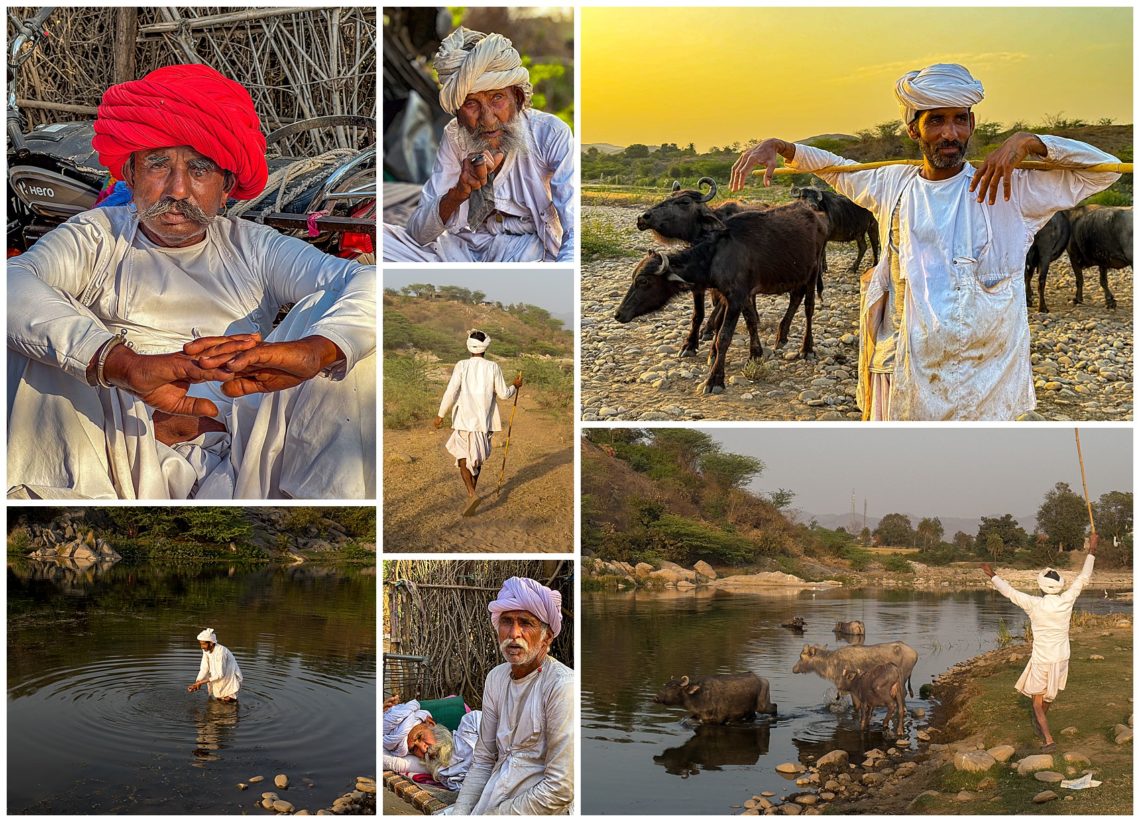
Poshina is a quaint remote village in the state of Gujarat near the border of Rajasthan, and is not on many of India’s tourists maps. It is described as a place where time stands still. Surrounded by several colorful tribes, including the Bhil, Garasias and the nomadic Rabaris, the scenes in these tribal areas are a photographer’s dream, where it is still untouched by commercial tourism.
At sunset, the maharaja drove our group to a local village outside of Poshina, where the shepherds were grazing their sheep and cattle. The nomadic Rabari shepherd (top right, bottom right, middle) leads his cattle to the river. The maharaja told us that he negotiated a deal with the shepherds for dung (fertilizer) in exchange for grazing rights on his land. The shepherd’s live a hard life, and we heard that one shepherd had a stroke (bottom middle) that morning and was resting on the cot. He was 75 year’s old, yet looked even older.
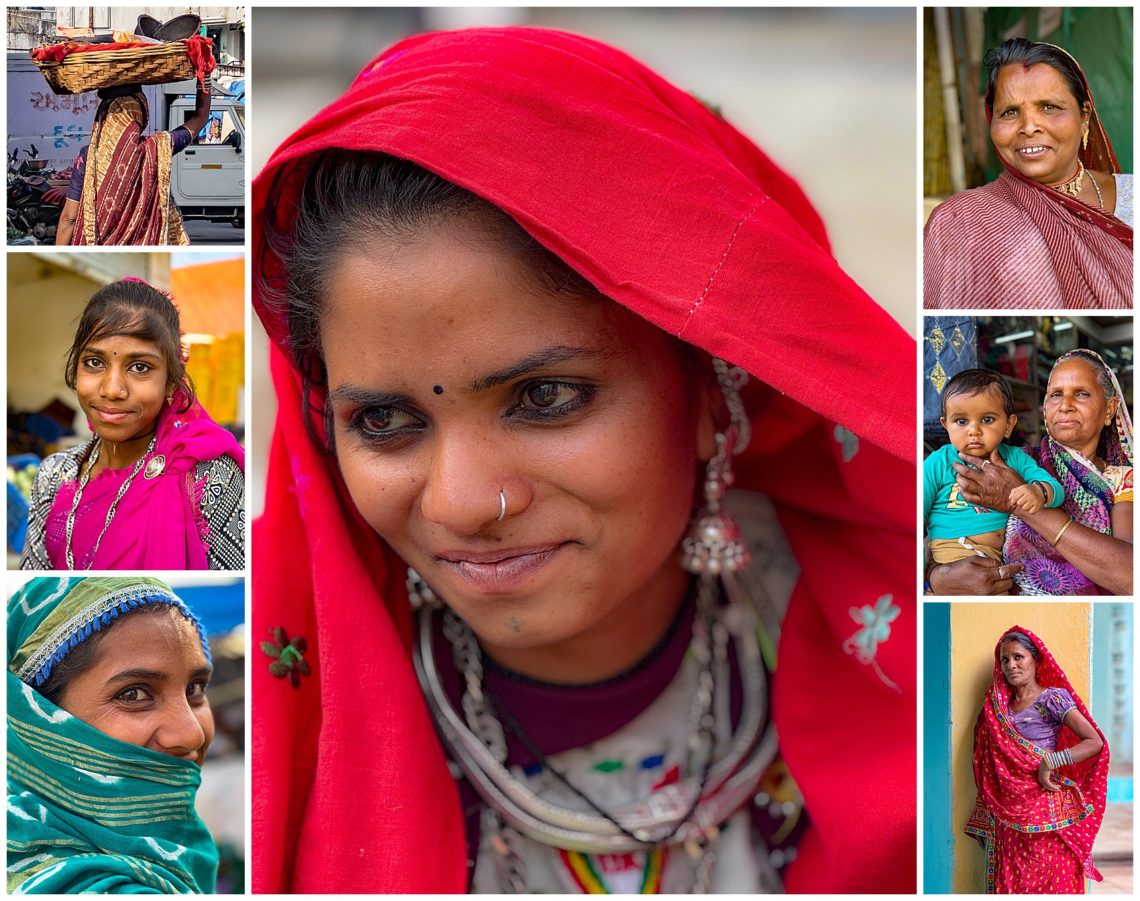
At the market once a week, the local villagers come all dressed up, just to shop. The villagers do not hold out their hands out for tips nor demand money to get their photos taken. However it can be quite challenging to get them engaged for a smile. It was often easier for a woman to make the connection. After the men photographers in our group left, Evelyn proved herself a master at connecting with the locals and getting smiles. Yes, it often helps to have rupees in hand to buy souvenirs or vegetables and fruit that are available for sale at the local markets.
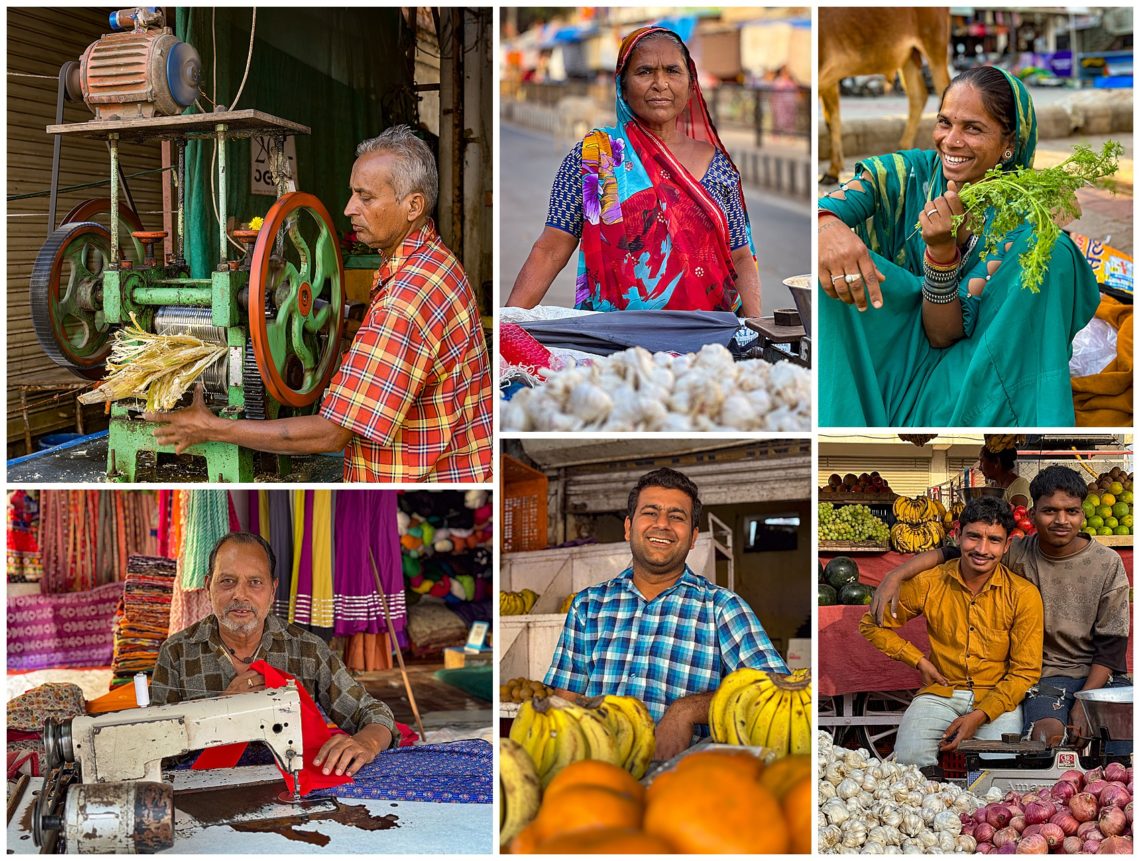
At the market, the tour guide gave us each 50 rupees (equivalent to $0.60 USD), and challenged us to see how much we could purchase with that money. Since the vendors did not speak English and we were not told how much things typically cost, we had to learn how to negotiate and determine what things cost. We were surprised how affordable items were, yet it seemed that 10% was their maximum discount. The vendors were not aggressive, and seemed to enjoy the negotiating game, which is an activity that can be done using just sign language worldwide. At the local market, we also noticed that the men were often the tailors.

This is daily life at a Bhil village. To get fresh water, the women carry the metal canisters balanced on top of their heads from the nearest well to their village (top right). There are no paved roads to this village, and when we arrived, we were greeted by cattle with painted horns (bottom left). We were told to walk around them, as the cattle were not accustomed to seeing strangers. In one village, the bulls were ready to charge the strangers, and it took a long moment to calm them. The bulls surprisingly became aggressive many times whenever Mehmet took out his camera and stepped in closer to get his shots, while the rest of us looked distressed, worrying whether our leader would be injured.

The children at a Bhil Tribal Village near Poshina were delightful, and really enjoyed engaging with our group. The Bhil tribe is the largest tribal community In the state of Gujarat, making up 46% of the tribal population. There are more than 700 ethnic groups in India that are recognized as tribes or indigenous. Very few tourists visit the local tribal villages, where the people are quite photogenic yet are often shy.
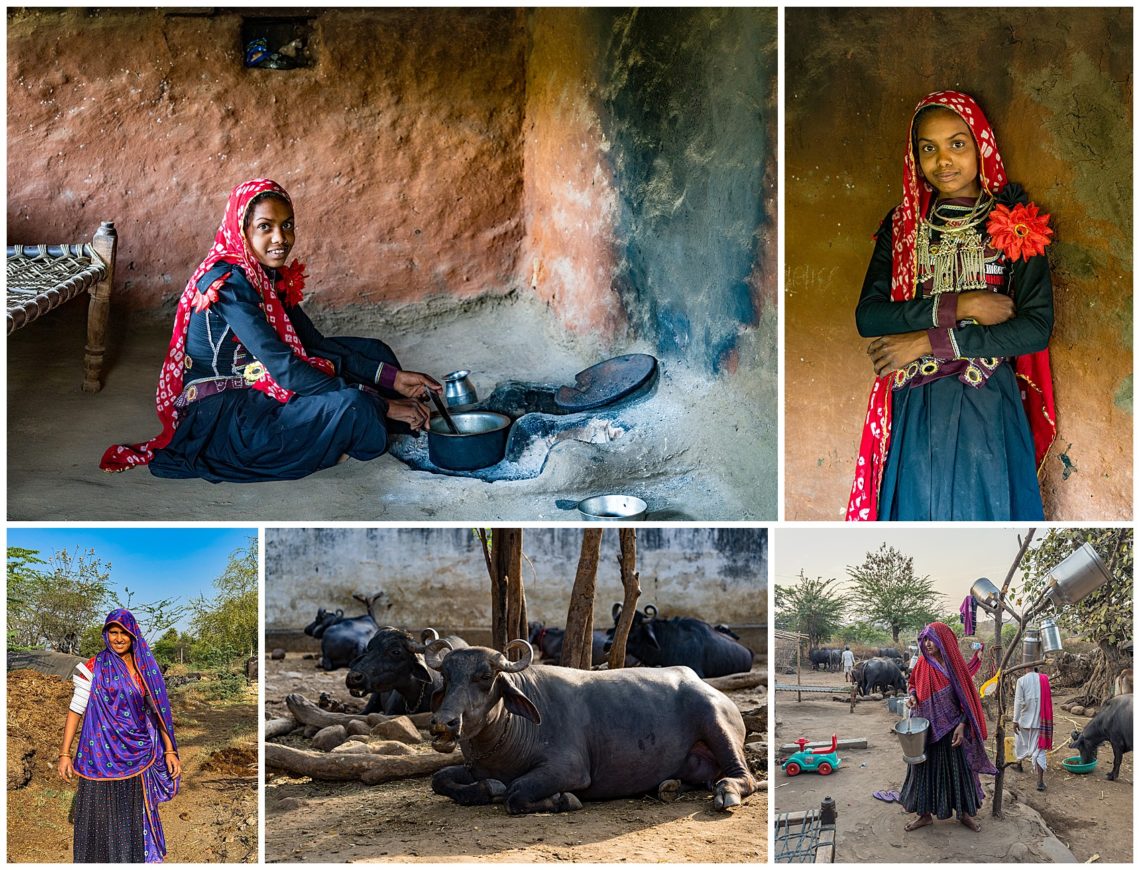
Sumit is one of the Garasias tribal villages, surrounding Poshina. Each tribal group has their distinctive clothing and jewelry.
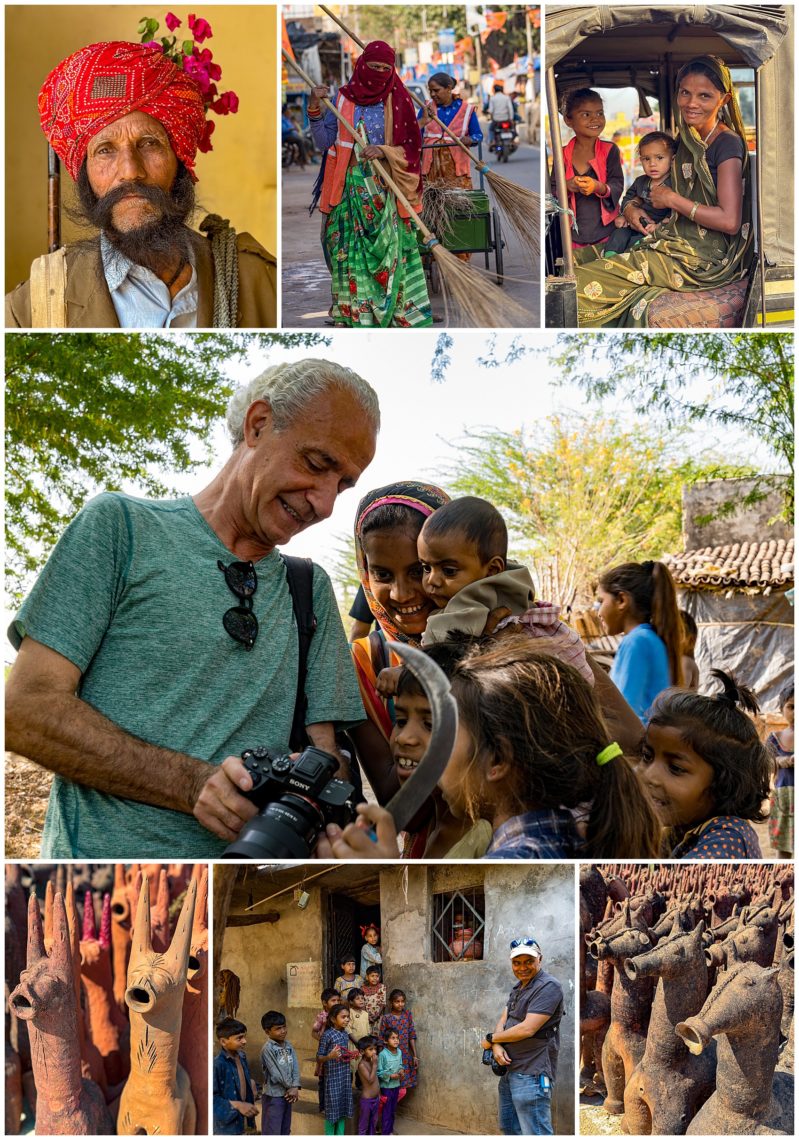
Several of the places where we stayed were at former maharaja’s residences. In the past, the Maharajas built magnificent palaces as a power symbol. In 1971, India abolished government payments to the maharajas, so some of the maharaja converted their estates into income-producing heritage hotels where you could live like royalty. Top left is the security guard who greeted us one of the maharaja’s palaces.
Outside of Poshina is where the terra cotta figures were built and fired. The terra cotta figurines are purchased and placed in shrines and sacred groves. (bottom left and bottom right).
We were astounded how many young kids we saw in the tribal villages. The children were captivated by Manoj, the Pied Piper and our tour operator. Manoj would snap a photo of a group of children, then show them his photo, which often were images of monkeys instead of kids, and the kids would break out into laughter. Of course, this broke the ice so the kids were relaxed, had fun, and sang songs for our group. (bottom middle). The kids also get engaged when you show them their photos in the viewfinder (Mehmet middle photo).
